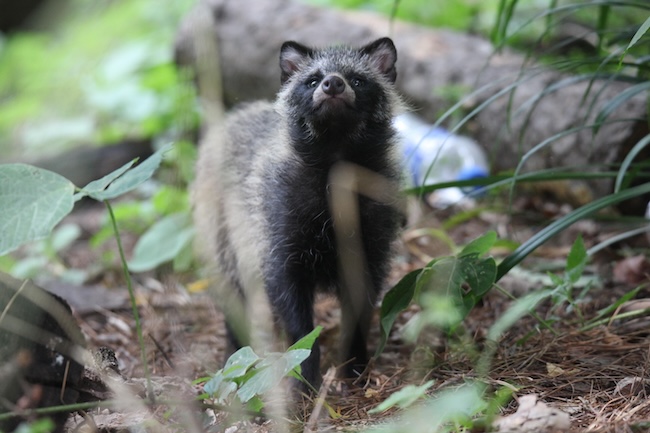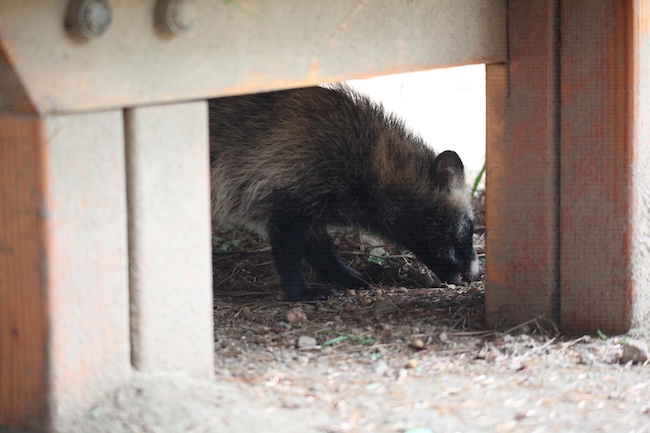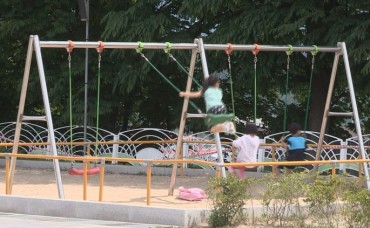
Raccoon dogs are becoming an increasingly common sight in South Korea’s capital city. (Image courtesy of Yonhap)
SEOUL, Jul. 15 (Korea Bizwire) – With their distinctive black masks, round ears, and elongated snouts, raccoon dogs are becoming an increasingly common sight in South Korea’s capital city.
These native animals, weighing between 4 to 10 kilograms and growing up to 68 centimeters in length, have traditionally inhabited rural areas across the Korean Peninsula.
However, recent studies indicate a significant shift in their habitat preferences, with more raccoon dogs venturing into urban environments.
A survey conducted by the Seoul Institute from June to October last year revealed the presence of raccoon dogs in 24 out of 25 districts in Seoul.
The study, which utilized 203 sensor cameras across 59 locations, including Nokbeon-dong in Eunpyeong-gu, Daemosan in Gangnam-gu, and Seoul Forest in Seongdong-gu, highlights the animals’ adaptability to diverse environments.
The Seoul Wildlife Rescue Center reported a 63.3% increase in raccoon dog rescues, from 49 in 2018 to 80 last year.
Simultaneously, the National Institute of Biological Resources noted a decrease in raccoon dog density in mountainous and hilly areas, from 3.3 per square kilometer in 2018 to 2.8 in 2023.
This data suggests a migration of these opportunistic omnivores from their traditional habitats to urban areas.
Urban parks have become new havens for raccoon dogs. At West Seoul Lake Park in Yangcheon-gu, visitors can easily spot these animals, which show little fear of humans. During a recent one-hour visit, eight raccoon dogs were observed, some approaching within one meter of people without fleeing.

many raccoon dogs have been seen feeding on cat food left out by well-meaning residents. (Image courtesy of Yonhap)
The influx of raccoon dogs into urban areas is largely attributed to the destruction of their natural habitats and the availability of food sources in cities.
Notably, many raccoon dogs have been seen feeding on cat food left out by well-meaning residents. A 73-year-old park visitor remarked, “They gather here because they know there’s food available.”
The Seoul Institute’s report, “Survey on the Status of Wild Raccoon Dogs in Seoul Downtown and Management Plans,” published in March, confirmed that raccoon dog sightings were more frequent in areas with cat feeding stations.
While the urban adaptation of raccoon dogs may seem harmless, experts warn of potential health and ecological risks.
With a range of 0.4 to 0.8 square kilometers per animal, high population densities in cities could lead to territorial conflicts. Young raccoon dogs, which become independent at nine months, face the risk of road accidents when navigating urban environments.
Health concerns include the potential transmission of parasites and, although no cases have been reported since 2013, the possibility of rabies spread. Rabies, a zoonotic disease affecting the central nervous system, has a high fatality rate.
Experts unanimously advise against human intervention in raccoon dog ecosystems. The Seoul Institute recommends improving forest and stream environments to reduce urban raccoon dog encounters and suggests implementing a systematic management of stray cat feeding stations.
Kim Bong-gyun, a rehabilitation manager at the Chungnam Wildlife Rescue Center, emphasized the need to limit human interactions, particularly feeding. “While raccoon dogs may not attack humans, they can show strong aggression towards pets, causing real damage,” Kim noted.
M. H. Lee (mhlee@koreabizwire.com)






